PS: Before we begin, know that I am still an amateur at off-road riding and the points that I am about to discuss are based on what I have learned as a Novice. So without wasting any time let’s begin.
I discovered that I like riding off road very much when I test rode the Royal Enfield Himalayan. I had never ridden an adventure bike before that so initially, I was very surprised at the things I am able to do with it. Suddenly I was able to steer in any direction no matter the road surface and effortlessly move ahead. So during my several off-road sessions, I learned a few important things which I think, everyone starting on an adventure bike should learn. It is not compulsory to follow these tips, but I found that once I became aware of these points my experience with off-road improved for the better.
1: You Will Misjudge the height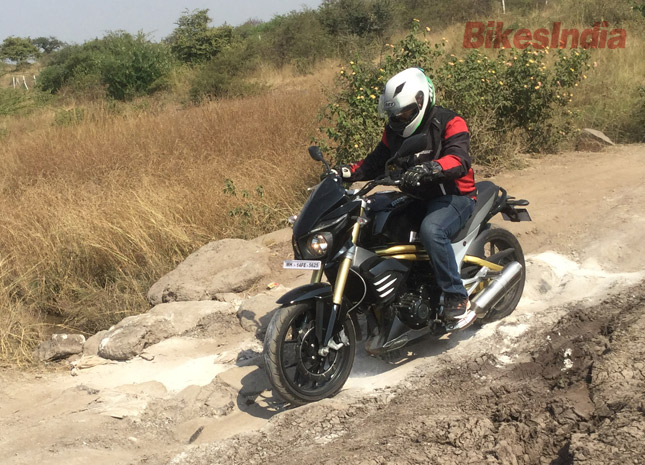 If you can remember your early days of riding a motorcycle on-road then the way in which you calculated braking distance or the curve ahead was a lot crude. Over time you were able to calculate them almost instantly and now it’s not a big task for you to lean into a corner. When riding off-road, the “Height” also gets added as sort of another “Dimension”, as now you will not just be going straight, left or right, but also up and down. Thus, several times you will find yourself misjudging the height of a slope. It will happen a lot initially and you might even end up falling because of it, so it’s always better to tread on familiar territory until you are not able to judge the ups and downs of road easily.
If you can remember your early days of riding a motorcycle on-road then the way in which you calculated braking distance or the curve ahead was a lot crude. Over time you were able to calculate them almost instantly and now it’s not a big task for you to lean into a corner. When riding off-road, the “Height” also gets added as sort of another “Dimension”, as now you will not just be going straight, left or right, but also up and down. Thus, several times you will find yourself misjudging the height of a slope. It will happen a lot initially and you might even end up falling because of it, so it’s always better to tread on familiar territory until you are not able to judge the ups and downs of road easily.
2: Use both brakes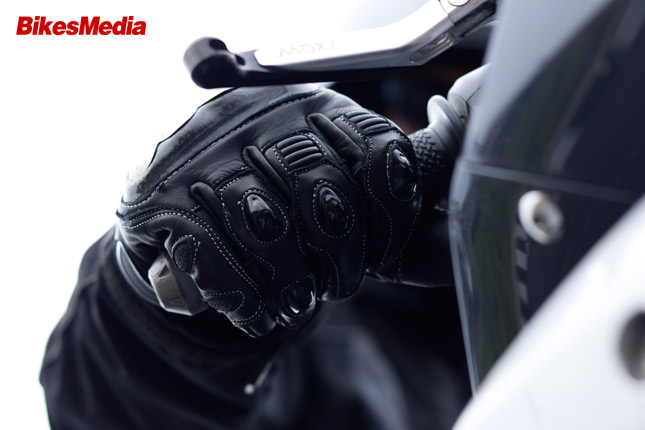 Many of us prefer to use only one brake. Some people are always pressing the rear brake lever while totally avoiding the front, and other folks are hell-bent on destroying the front disc. When riding off-road, you will need to use both. I usually pulled in the clutch first, then the front disc lever and finally the rear disc. The dirt is more uneven than the worst of roads so it’s better to brake efficiently every time.
Many of us prefer to use only one brake. Some people are always pressing the rear brake lever while totally avoiding the front, and other folks are hell-bent on destroying the front disc. When riding off-road, you will need to use both. I usually pulled in the clutch first, then the front disc lever and finally the rear disc. The dirt is more uneven than the worst of roads so it’s better to brake efficiently every time.
3: Steer with the Rear Wheel/Rear Disc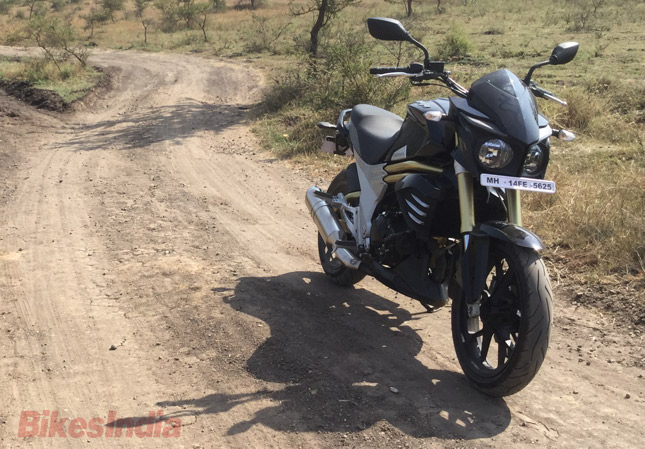 The most fun part of riding off-road is steering with the rear wheel. It feels amazing when you pull off a 180-degree turn by spinning your rear wheel. I initially fell because I was unable to match the throttle with the clutch and brakes but overtime It became easy.
The most fun part of riding off-road is steering with the rear wheel. It feels amazing when you pull off a 180-degree turn by spinning your rear wheel. I initially fell because I was unable to match the throttle with the clutch and brakes but overtime It became easy.
To do this maneuver, make sure that your shoulders are squared, then try moving your upper body in the direction you’re turning. Pull in the clutch with two fingers, thus allowing some power to transfer to the rear wheel, twist in the throttle to get the rear tyre spinning and then use the rear brake. By the time the rear wheel starts spinning, you can pull in the clutch and focus on braking while simultaneously moving your body to assist. All of this happens in just a few seconds so you will take a good amount of time before you can perform all of this in a proper sequence.
4: Use different grips for different surfaces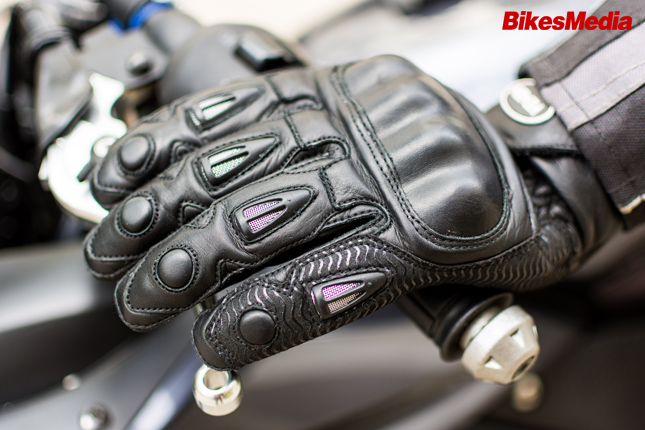 Off-road not only includes dirt but also mud, swamp, water, pebbles and everything else that nature has to offer. While riding on different surfaces, keep the grip on handlebar accordingly. When steering with the rear wheel, keep the grip tight but while riding in a muddy or swampy area keep it loose. Use the rear wheel to steer often. I have ridden on these two surfaces only so I can only tell you about them.
Off-road not only includes dirt but also mud, swamp, water, pebbles and everything else that nature has to offer. While riding on different surfaces, keep the grip on handlebar accordingly. When steering with the rear wheel, keep the grip tight but while riding in a muddy or swampy area keep it loose. Use the rear wheel to steer often. I have ridden on these two surfaces only so I can only tell you about them.
5: Standing is fun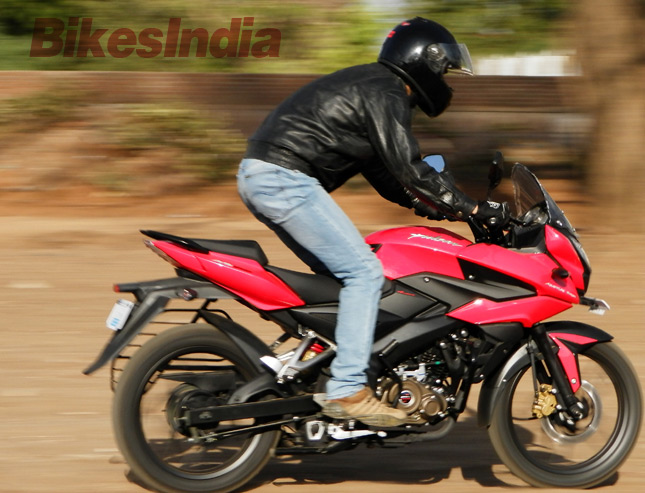 Standing was one of the way using which I learned how to properly assess the road ahead. The ups and downs of an off-road are better visible when you’re standing on your bike. Also while traveling over pebbles or rocks, standing helps quite a bit in weight distribution.
Standing was one of the way using which I learned how to properly assess the road ahead. The ups and downs of an off-road are better visible when you’re standing on your bike. Also while traveling over pebbles or rocks, standing helps quite a bit in weight distribution.
Adventure riding is a really fun activity and the best thing about it is its accessible nature. One can easily find an off-road path or trail in India and discover the joy of off-roading. I hope you find this article useful.
By: Yetnesh Dubey
I discovered that I like riding off road very much when I test rode the Royal Enfield Himalayan. I had never ridden an adventure bike before that so initially, I was very surprised at the things I am able to do with it. Suddenly I was able to steer in any direction no matter the road surface and effortlessly move ahead. So during my several off-road sessions, I learned a few important things which I think, everyone starting on an adventure bike should learn. It is not compulsory to follow these tips, but I found that once I became aware of these points my experience with off-road improved for the better.
1: You Will Misjudge the height
 If you can remember your early days of riding a motorcycle on-road then the way in which you calculated braking distance or the curve ahead was a lot crude. Over time you were able to calculate them almost instantly and now it’s not a big task for you to lean into a corner. When riding off-road, the “Height” also gets added as sort of another “Dimension”, as now you will not just be going straight, left or right, but also up and down. Thus, several times you will find yourself misjudging the height of a slope. It will happen a lot initially and you might even end up falling because of it, so it’s always better to tread on familiar territory until you are not able to judge the ups and downs of road easily.
If you can remember your early days of riding a motorcycle on-road then the way in which you calculated braking distance or the curve ahead was a lot crude. Over time you were able to calculate them almost instantly and now it’s not a big task for you to lean into a corner. When riding off-road, the “Height” also gets added as sort of another “Dimension”, as now you will not just be going straight, left or right, but also up and down. Thus, several times you will find yourself misjudging the height of a slope. It will happen a lot initially and you might even end up falling because of it, so it’s always better to tread on familiar territory until you are not able to judge the ups and downs of road easily. 2: Use both brakes
 Many of us prefer to use only one brake. Some people are always pressing the rear brake lever while totally avoiding the front, and other folks are hell-bent on destroying the front disc. When riding off-road, you will need to use both. I usually pulled in the clutch first, then the front disc lever and finally the rear disc. The dirt is more uneven than the worst of roads so it’s better to brake efficiently every time.
Many of us prefer to use only one brake. Some people are always pressing the rear brake lever while totally avoiding the front, and other folks are hell-bent on destroying the front disc. When riding off-road, you will need to use both. I usually pulled in the clutch first, then the front disc lever and finally the rear disc. The dirt is more uneven than the worst of roads so it’s better to brake efficiently every time.3: Steer with the Rear Wheel/Rear Disc
 The most fun part of riding off-road is steering with the rear wheel. It feels amazing when you pull off a 180-degree turn by spinning your rear wheel. I initially fell because I was unable to match the throttle with the clutch and brakes but overtime It became easy.
The most fun part of riding off-road is steering with the rear wheel. It feels amazing when you pull off a 180-degree turn by spinning your rear wheel. I initially fell because I was unable to match the throttle with the clutch and brakes but overtime It became easy. To do this maneuver, make sure that your shoulders are squared, then try moving your upper body in the direction you’re turning. Pull in the clutch with two fingers, thus allowing some power to transfer to the rear wheel, twist in the throttle to get the rear tyre spinning and then use the rear brake. By the time the rear wheel starts spinning, you can pull in the clutch and focus on braking while simultaneously moving your body to assist. All of this happens in just a few seconds so you will take a good amount of time before you can perform all of this in a proper sequence.
4: Use different grips for different surfaces
 Off-road not only includes dirt but also mud, swamp, water, pebbles and everything else that nature has to offer. While riding on different surfaces, keep the grip on handlebar accordingly. When steering with the rear wheel, keep the grip tight but while riding in a muddy or swampy area keep it loose. Use the rear wheel to steer often. I have ridden on these two surfaces only so I can only tell you about them.
Off-road not only includes dirt but also mud, swamp, water, pebbles and everything else that nature has to offer. While riding on different surfaces, keep the grip on handlebar accordingly. When steering with the rear wheel, keep the grip tight but while riding in a muddy or swampy area keep it loose. Use the rear wheel to steer often. I have ridden on these two surfaces only so I can only tell you about them.5: Standing is fun
 Standing was one of the way using which I learned how to properly assess the road ahead. The ups and downs of an off-road are better visible when you’re standing on your bike. Also while traveling over pebbles or rocks, standing helps quite a bit in weight distribution.
Standing was one of the way using which I learned how to properly assess the road ahead. The ups and downs of an off-road are better visible when you’re standing on your bike. Also while traveling over pebbles or rocks, standing helps quite a bit in weight distribution. Adventure riding is a really fun activity and the best thing about it is its accessible nature. One can easily find an off-road path or trail in India and discover the joy of off-roading. I hope you find this article useful.
By: Yetnesh Dubey











